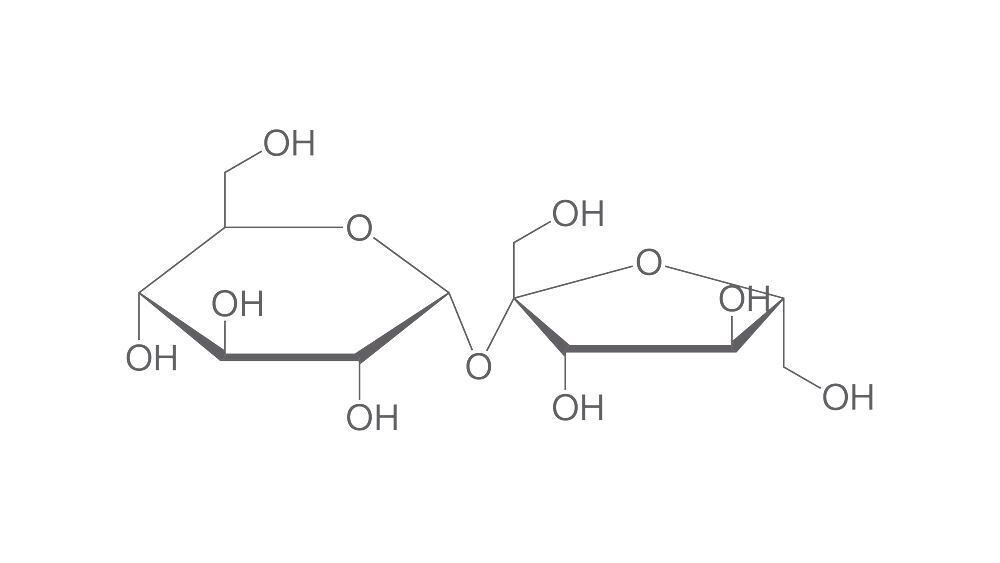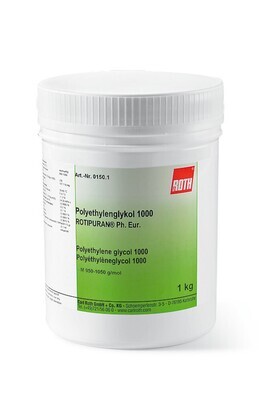Verzending 24–48 u • Levering in de hele EU • Veilige chemieverpakking
D(+)-Saccharose, 500 g
SKU 8890.4
€ 159,91
In stock
1
Save this product for later
D(+)-Saccharose, 500 g
Product Details
HS code: 17019910
Brand: Carl Roth
D(+)-Saccharose, CELLPURE®, Molar mass (M) 342,30 g/mol, CAS No. [57-50-1], EG-Nr. 200-334-9, Empirical formula C12H22O11
D(+)-Saccharose CELLPURE®
Technische informatie
| Endotoxinegehalte | ≤1,5 E.U./g |
Sugar (Carbohydrates)
Carbohydrates or Saccharides make up 50 % of the dry biomass of the earth and are therefore the most frequent class of biomolecules. Besides at least two hydroxy groups, they also have an aldehyde or a ketone group and can be subdivided according to the number of monomeric components in mono-, di-, oligo and polysaccharides.
Whereas mono-, di- and oligosaccharides are soluble in water, taste sweet and are therefore called as sugar, polysaccharides are hardly, or not at all, soluble in water and have a neutral taste.
Carbohydrates, together with fats and proteins make up a large percentage of nutrition. In addition to their central role as an energy source, they are also an important structural component especially in plants (e.g. Cellulose). Ribose, a monosaccaride with five carbons (C5H10O5) is an essential element of coenzymes (such as ATP, FAD and NAD) and a structural component of RNA. Desoxyribose (a ribose derivative) is a structural component of DNA.
Disaccharides
Disaccharides consist of two monosaccharide units. These are interlinked covalently via a glycocide bond. The most familiar representatives are saccharose, lactose and maltose.
| Endotoxins | ≤1,5 E.U./g |
| Appearance | white to off-white powder |
| Loss on drying (3 h, 105 °C) | ≤0,1 % |
| Specific rotation [α]20D (c=26 in H2O) | +66,3° to +67,0° |
| Conductivity | ≤35 µS/cm |
| Sulphite (SO3) | ≤0,001 % |
| Ethanol | ≤0,1 % |
| Methanol | ≤0,05 % |
You May Also Like

3-Nitro-4-piperidin-1-ylbenzoic acid, 95.0%, 500mg
3-Nitro-4-piperidin-1-ylbenzoic acid, 95.0%, 500mg
SKU F034020-500MG
€ 160,60

(6-Phenylnaphthalen-2-yl)boronic acid, 95.0%, 100g
(6-Phenylnaphthalen-2-yl)boronic acid, 95.0%, 100g
SKU F363958-100G
€ 1 780,90
Display prices in:EUR


![(R)-1-[3,5-Bis(trifluoromethyl)phenyl], ethanol, min. 99%, 1 g, glass packaging (R)-1-[3,5-Bis(trifluoromethyl)phenyl], ethanol, min. 99%, 1 g, glass packaging](https://d2j6dbq0eux0bg.cloudfront.net/images/88473019/4045179939.jpg)




![Tert-butyl 2-amino-4-chloro-5,7-dihydro-6H-pyrrolo[3,4-d]pyrimidine-6-carboxylate, 95+%, 250mg Tert-butyl 2-amino-4-chloro-5,7-dihydro-6H-pyrrolo[3,4-d]pyrimidine-6-carboxylate, 95+%, 250mg](https://d2j6dbq0eux0bg.cloudfront.net/images/88473019/4771605809.png)

![3-Methylbenzo[b]thiophene-2-carboxaldehyde, 95.0%, 25g 3-Methylbenzo[b]thiophene-2-carboxaldehyde, 95.0%, 25g](https://d2j6dbq0eux0bg.cloudfront.net/images/88473019/4861055140.png)

